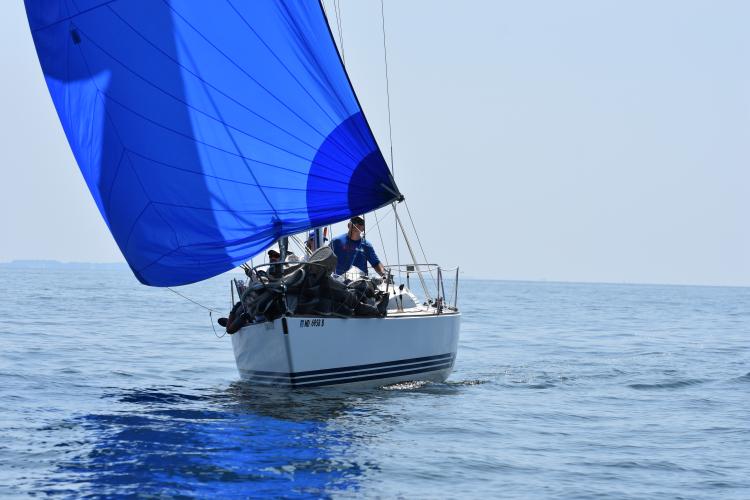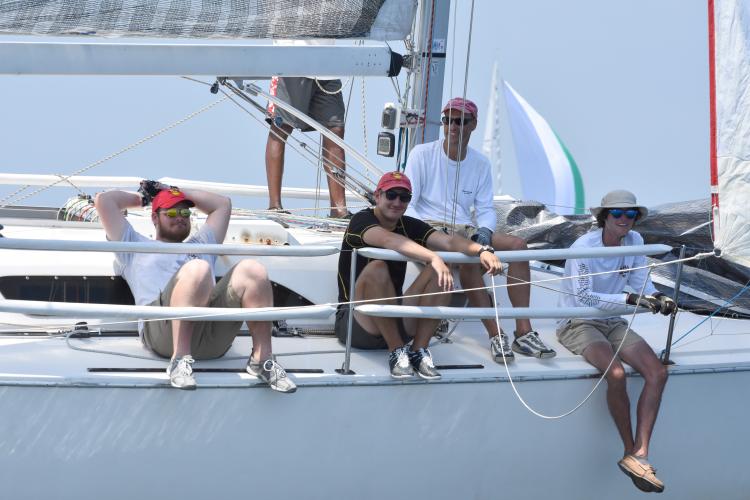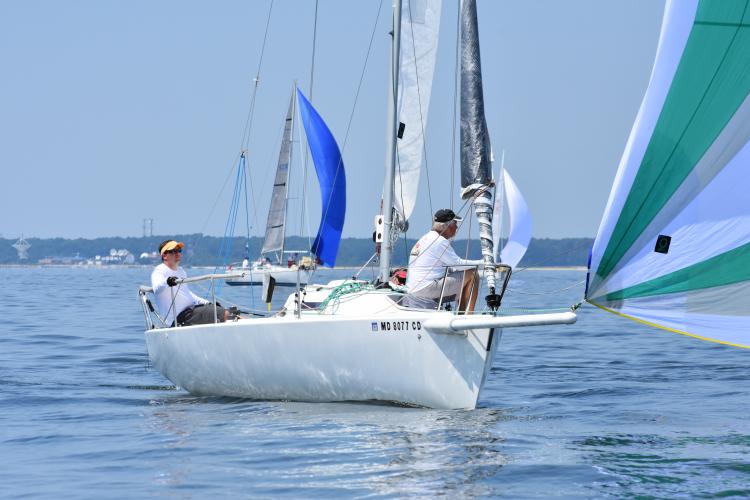Improve Your VMG in These Four Weather Conditions
Why can’t I point is a common refrain heard post race at bars and yacht clubs around the world, and a very tricky question.
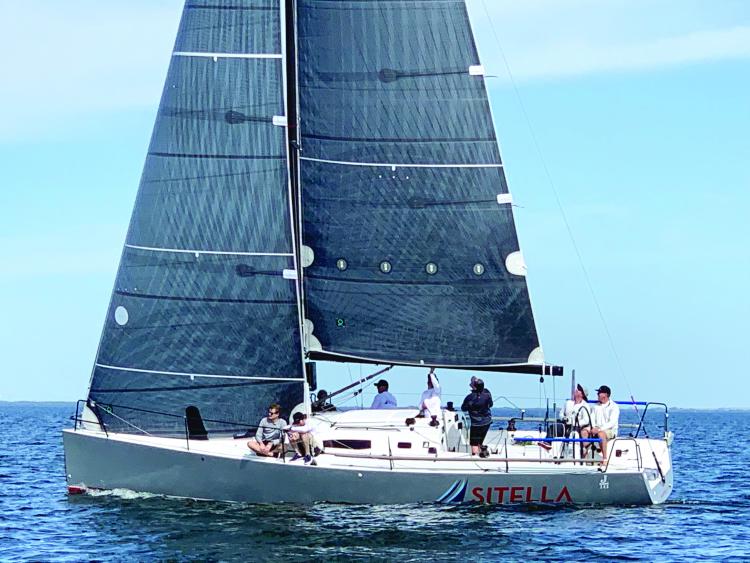
There are many possible causes, often interrelated. It is a particularly vexing diagnosis for handicap sailors since fundamental differences between boats can make it an impossible task. Expecting a heavy, low-power, limited-draft design to be an upwind monster is just not being realistic. For one-design sailors the problem can be more clearly defined and the finger pointed. In the immortal words of Pogo, “We have met the enemy, and he is us.” We asked David Flynn of Quantum Sails to help sort through the myriad of possible causes of poor upwind velocity made good (VMG), here he breaks the problem down into four conditions:
1. light air
2. transition phase
3. optimum/medium
4.heavy air.
1. LIGHT AIR
I would like to define “light air” as any condition where the crew is not hiking to weather. Actual velocity will vary as a function of boat design. The higher the horsepower to weight ratio, the quicker everyone is up on the rail. To use a golf analogy, in this range there are a couple of key “swing” thoughts to keep in mind.
Power, power, power:
If you sail a modern fractional rig with swept-back spreaders, you need to power up the rig. Increasing headstay length, easing tension on the uppers, lowers, and diagonals are key. In established one-design classes the exact numbers and proportions will be set out in well-researched tuning guides. For handicap boats there may not be specific settings, but the goals are the same:
- Generate headstay sag to power up the headsail and
- Create middle-mast sag to juice up the mainsail.
You would like the headstay to sag just to the point of bouncing in the waves. An inch or two of leeward sag as you sight up the mast is the goal. For boats with more traditional masthead rigs with inline spreaders you can still go for headstay sag by fully releasing the backstay, though you will need to be careful of loosening up the rig too much. On all boats a little extra pre-bend is good, so moving the mast step aft is a nice touch.
Heel is good:
Heeling the boat over creates weather helm and forces it to point. The crew would aggressively move weight forward and to leeward. This is particularly critical out of tacks or when you are trying to squeeze up to a weather mark on a thin lay line. Weight forward will put the skinny part of the boat in the water and pick the fat stern sections out, reducing wetted surface. Keep weight low. On bigger boats, down below is the best place to be. (Who really wants to watch in these conditions anyway?)
Speed first:
You have to resist the temptation to point. This may be counter intuitive, but unless you get water flowing past the blades, they are not going to work; and you will just go sideways. Err on the side of “footing” or being on the low part of the groove with telltales streaming straight aft or even showing a little heavy on the bottom set. Use the middle telltales. It is okay to steer to leeward; your weight will be better positioned, and you can see the whole headsail.
Go straight!
Steering to keep the telltales flying is important, but be careful not to chase. Small changes in wind speed (little puffs and lulls) will have a big impact on apparent wind angle. In a puff the apparent wind will move aft, and the telltales will tell you to come up. You can, but a better approach is to split the difference. Ease the headsail sheet to keep the telltales flowing, turning the puff into speed first, and then ever so gradually sneak the boat up trimming slowly as you go. Don’t get greedy! If you come up too fast and overshoot, you will kill speed quickly and will have to start all over again. In a lull you will get a header, and the jib will show luff. Instead of bearing off quickly, over trim for a moment and gradually bear off. As the boat slows, the apparent wind will go back aft, and you will be able to ease and resume a normal setup. The trick is not to coast in the lulls and not give up too much distance to leeward. Constant work with both trimmers minimizes the amount the driver has to steer. Straight, with a steady state and flow is the goal.
2. TRANSITION PHASE
I define the transition phase as the velocity it takes to go from needing to create heel to having the crew fully hiking. This is usually somewhere between eight to 12 knots depending on the horsepower to weight ratio of the boat. The higher the ratio, the earlier everyone is hiking.
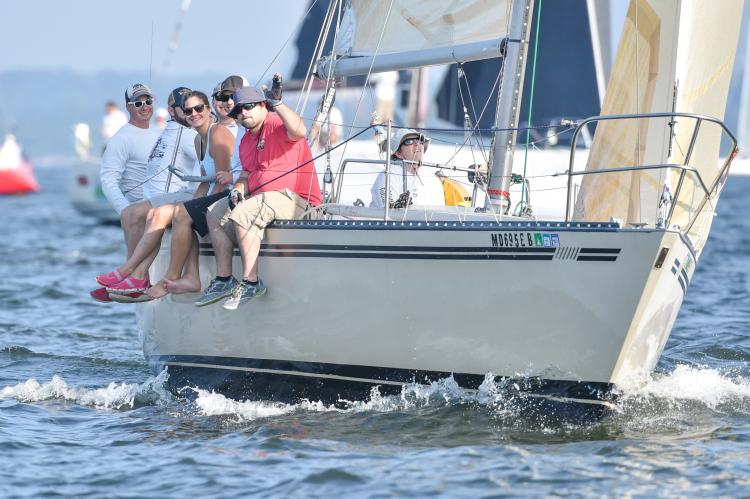
Changing gears is the key:
Trimmers need to be very active in this phase. Every puff is a chance to accelerate and point; initially a slight ease on the sheets to let the boat accelerate and then sheet on to gain height. How hard can you trim? When the boat starts to slow down too much, you’ve gone too far. The process is like taking little bites to weather at every opportunity. Bigger puffs may require further de-powering. Dropping the traveler and adding backstay is the next step as soon as the crew is fully hiking.
Work the weight:
The crew needs to feel and respond to heel. How many go up to the rail is a function of how big the velocity increase is. Have an order for who goes up. If it’s a big puff, then everybody goes. In the lulls as the boat gets flat, reverse the process. In the transition phase, it is probably better to err on the side of a little extra heel if you are trying to point. Once everyone is on the rail, you will probably be able to slide a body or two aft. Always keep the weight tightly packed together. Never sit on the cabin top! One crew member should be designated to call the changes in breeze velocity to help everyone anticipate.
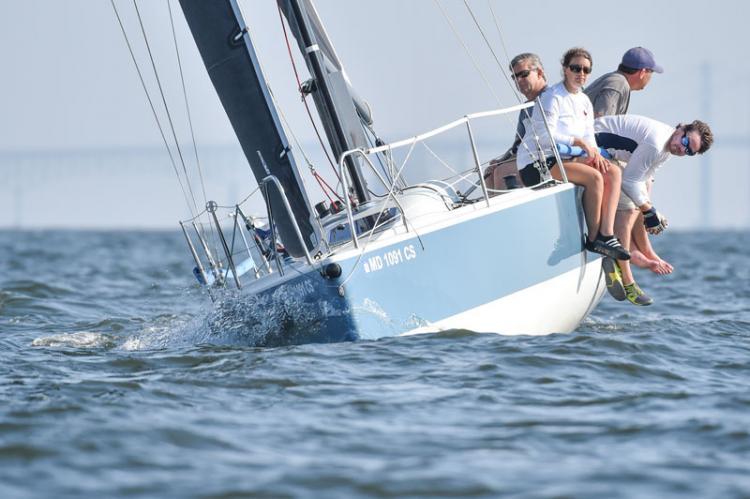
You can steer more:
In the light stuff you need to be very careful about over steering. In the transition phase you can be more active. Be ready to have the bow coming up to meet the puff, or you lose the opportunity to gain height. Feel the boat, and don’t let it over heel. Trimming and crew weight will be moving to help, but you still need to steer to control heel. In the light spots be careful to not bear off too far and chase the boat speed. Coast for a moment; let the boat speed drop. As you slow, the apparent wind will move aft and you may not have to bear off at all. If you use target boat speed, remember that it is very volatile in the transition stage. A small puff will mean a big increase in boat speed, and you will have to accept a deterioration in a lull. Don’t get too fixated on target speeds in this range.
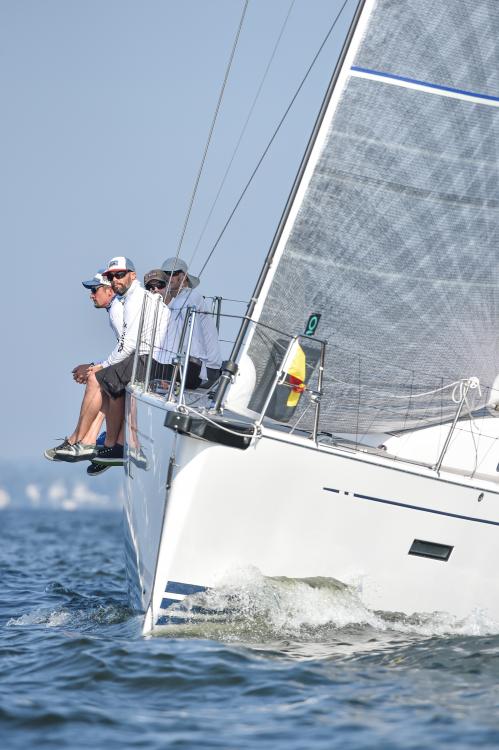
Rig adjustment:
If you are adjusting the rig for conditions, I would still tend to err on the side of more power rather than less in the transition phase.
That is all for now! Look out for Why Can't I Point? Part Two in our May Issue. We will cover optimum/medium and heavy air conditions.
~ By David Flynn of Quantum Sail Design in Annapolis
Questions? email: [email protected]
This article was printed in the March 2019 issue of SpinSheet
